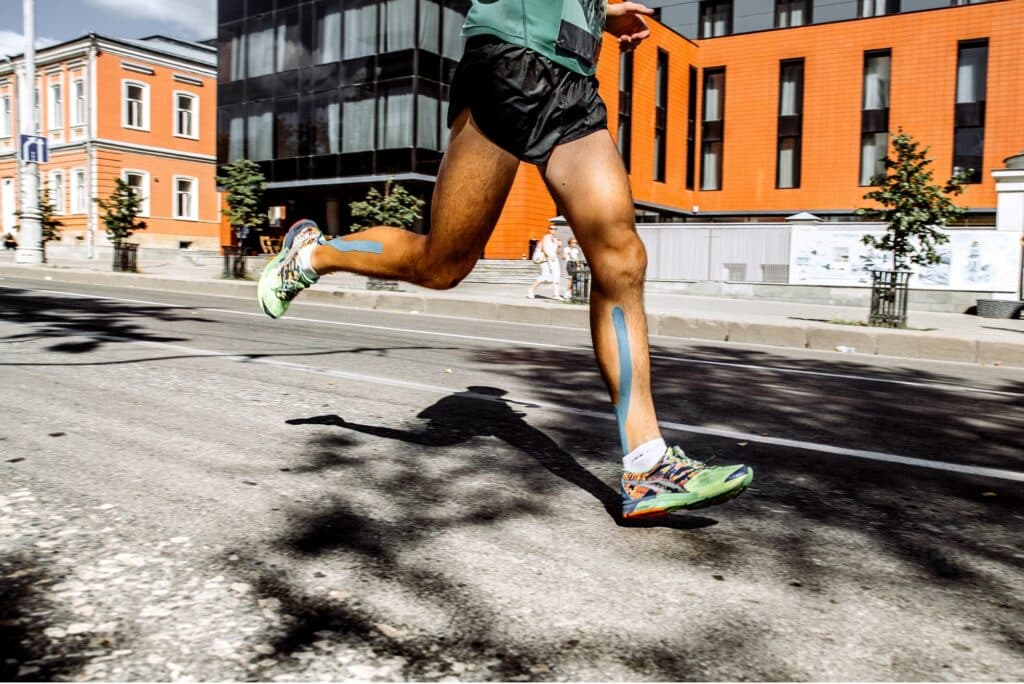


Running cadence is an essential aspect of running that can greatly impact your performance and reduce the risk of injury. Cadence refers to the number of steps a runner takes per minute, also known as stride rate, and understanding your current running cadence is crucial for making improvements. A higher cadence has been associated with better running efficiency and less stress on the body.
In this guide, we will discuss some expert tips about how to improve running cadence for better performance.
Before we dive into tips for improving running cadence, it’s important to understand what it is and why it matters. Running cadence is the number of steps you take per minute, and it’s a critical factor in determining your running speed and pace. A higher cadence can improve your running economy and overall running performance. Studies from elite distance runners during the 1984 Olympics have shown that optimal cadence can significantly influence performance and reduce injury risk.
Understanding your running cadence is essential to optimise your running form and efficiency. Elite runners typically maintain a cadence between 180-200 strides per minute, which is considered a common goal for those looking to improve their performance. Cadence is essentially the speed at which you take steps while running. It is measured in strides per minute (SPM) and can range from 160-200 SPM for most runners.
Having a higher cadence means taking more steps per minute but with shorter strides. This reduces the amount of time your feet spend on the ground, allowing for quicker turnover and less impact on your joints.
Research has shown that increasing your cadence can help reduce the risk of injuries such as shin splints, knee pain, and stress fractures. It also allows you to cover more ground with less effort, improving your overall performance.

The first step in improving your running cadence is to determine your current cadence. Understanding how to increase cadence is essential for improving your running performance and reducing injury risk. There are various methods for calculating your running cadence, including using a running watch with a built-in accelerometer or foot pod, counting the number of steps you take in one minute, or recording yourself while running and counting your steps from there.
Once you have determined your current cadence, you can work on increasing it gradually over time. It’s important not to try to drastically increase your cadence, as this may cause injury. Aim for a 5-10% increase per week until you reach your desired level.
Several factors can influence your optimal running cadence, including height, stride length, and terrain. Stride frequency, or the number of steps taken per minute, is influenced by factors such as height, stride length, and terrain. Individual running cadence is dependent on various factors such as body composition and type of running performed. Taller runners generally have a lower cadence than shorter runners due to their longer legs and bigger strides. However, this doesn’t mean that taller runners should aim for a higher cadence, as it may lead to overstriding and reduced efficiency.
The terrain you are running on also plays a role in your cadence. When running uphill or on uneven surfaces, your body naturally increases its cadence to maintain balance and control. On the other hand, when running downhill, your body may decrease its cadence to avoid overstriding and losing control.
Improving your running cadence offers various benefits that can significantly impact your performance. These include:
There are several training techniques you can incorporate into your routine to improve your running cadence. These techniques are designed to help you increase running cadence gradually and safely. These include:
Here at Coach the Run, we offer a variety of downloadable training plans that can help you improve your running cadence while also building strength and endurance. By following our expert tips and incorporating specific training techniques, you can achieve a higher cadence and reach your full potential as a runner.

Aside from cadence, having an efficient running form is crucial for improved performance and reducing the risk of injury. Proper running form, including a higher cadence, contributes to a more efficient running form and reduces the risk of injury. Some key elements of proper running form include:
Overall, a combination of proper running form and an optimal cadence can significantly improve your running performance. By focusing on these elements and incorporating specific training techniques, you can become a more efficient runner and reach your goals.
While increasing your running cadence may seem like a quick fix to improve performance, it’s essential to approach it gradually and with proper form. Focusing on correct running technique is essential when gradually increasing your cadence to avoid injury. Overstriding, which occurs when your foot lands too far in front of your body, can lead to inefficient movement and even injury. By gradually increasing your cadence and focusing on maintaining proper form, you are setting yourself up for long-term success as a runner.
To increase your cadence, start with your base steps per minute and increase by 5-10%. Even a tiny increase in cadence can improve running performance and reduce the risk of injury. It’s essential to increase cadence gradually over time to allow your body to adapt. Consistency is vital, so remember to be patient and listen to your body while working towards a higher cadence. With dedication and the right techniques, you can achieve an optimal running cadence that will help you reach your full potential as a runner.
As you work on increasing your running cadence, it’s important to track your progress and make adjustments as needed. Monitoring your running pace alongside your cadence can help you make necessary adjustments for optimal performance. A simple way to measure cadence is by using a GPS watch or tracking app that displays steps per minute. Alternatively, you can count the number of steps taken in one minute and multiply it by two.
Measure your cadence every 7-10 minutes on your run to ensure you’re on track. Start with a cadence of 160 SPM and gradually increase it by 2 SPM every week. If you experience any discomfort or feel like your form is suffering, it’s essential to adjust accordingly. Your body will need time to adapt and find a cadence that works best for you.
When working on increasing your running cadence, there are some common mistakes to avoid that can hinder your progress. These include:
By being aware of these mistakes and taking a gradual approach, you can safely and effectively increase your running cadence.
Improving your running cadence can have a significant impact on your overall performance and reduce the risk of injury. By incorporating specific training techniques, focusing on proper form, and gradually increasing your cadence, you can become a more efficient runner. Remember to track your progress, listen to your body, and make adjustments as needed.
For even more expert guidance on improving your cadence and overall running performance, be sure to check out our downloadable training plans here at Coach the Run. So what are you waiting for? Start working on your cadence and reach new heights in your running journey. Happy training!
Join our mailing list to stay up to date with the latest UK running events, training tips, and exclusive offers on running products. Rest assured, we value your privacy and would never dream of selling your address. Sign up now…
Share this article
Well, yes and no. That is, I did it, and that I know lots of...
A story from our co-founder, Stu Taylor now in his 40’s, and his ambitious journey...
For many people, the thought of running conjures images of sprinting at top speed, pushing...
Designed by our head coach, Mike Gratton, winner of the 1983 London Marathon, this 8-week...
As runners over 40, we often focus on mileage, speed, and endurance. But there’s a...
As a general rule of thumb, it is not recommended to continue running when you...
We’re here to make sure you’re up-to-date with the latest running tips, events and product discounts – we’ve always got your back! Rest assured, we value your privacy and would never dream of selling your address.
BONUS: Sign up today and receive a FREE code for our Sub-4-Hour Marathon Plan